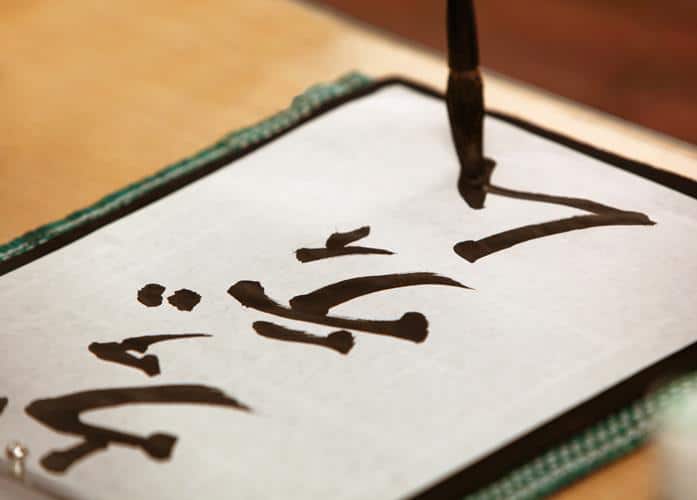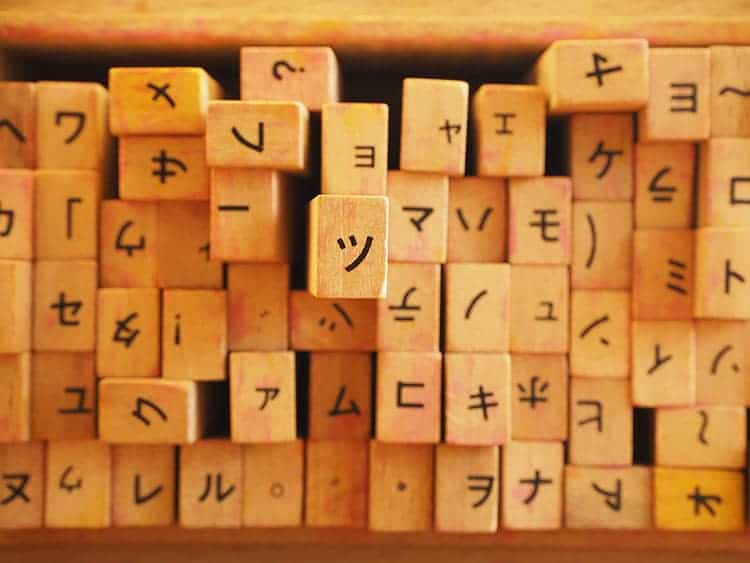Why is Japanese so Hard to Learn?

In some cases, we earn commissions from affiliate links in our posts.
Why is Japanese so hard to learn? Is Japanese really that difficult?
It’s true that Japanese can be a hard language to learn, but it comes with a lot of benefits. You could watch your favorite anime without subtitles, play video games before their international release, no longer have to wait for manga to be translated, and be able to travel comfortably in the Land of the Rising Sun.
Learning a new language opens many doors and unlocks countless possibilities- but before you buy your tickets to Japan, you may want to know just what you are getting yourself into by picking up that Japanese textbook.
Table of Contents
Why is Learning Japanese Hard?
While there are many factors involved in determining the difficulty level of each language, the short answer is: yes! Learning any second language is tough, but Japanese is one language in particular that poses a challenge to non-native speakers.
However- before you throw away your dreams of eating authentic sushi and reading manga on its release date- know that the exact level of difficulty can vary greatly depending on your unique situation. It is absolutely true that learning Japanese will be easier for some and harder for others.
The Good News- For Some
There is some good news for bilingual folks who already know the ropes of juggling languages. Research shows that those who already speak multiple languages have an easier time learning an additional one.
There are also certain languages that, if you already speak them, will give you an advantage over others when learning Japanese:
- If you speak Finnish, you will find that there are many (somewhat mysterious!) connections between Finnish and Japanese.
- Chinese speakers will find many similar words that were adopted from Chinese. You may also recognize some kanji characters- although be aware that the meaning may be different in Japanese!
- And for all those reading this article- congrats! English speakers will find that many Japanese words have been adapted from English. Often written in katakana, these adopted words will be immediately recognizable to you- despite being pronounced in a slightly different way.
At the end of the day, the one thing that matters most in learning a new language is your determination. No matter how many languages someone knows- they won’t stand a chance against someone who puts in the time and effort to learn Japanese.
But How Hard is it to Learn Japanese?
While some may have a language-advantage over others when it comes to studying Japanese, there are aspects unique to this language that will pose a challenge for all learners. We can see just how difficult Japanese is to master by taking a look at how two prominent organizations rank it on a global scale.
- The Foreign Service Institute (FSI) bases its ranking system on how much time it takes for an English-speaker to achieve General Proficiency in both Speaking and Reading. Of their four categories, Japanese is placed in the highest level tier at Category 4: “Super-hard languages”.
- The Defense Language Institute (DSI) has a similar ranking system and also categorizes Japanese as a Category 4 language- one of the hardest languages for an English-speaker to learn.
Both organizations place Japanese in the highest tier- alongside Chinese, Korean and Arabic.
So What Makes Japanese so Hard to Learn?
As one of the most intimidating learning tasks for English-speakers to pursue, it is important to consider what it is about the Japanese language that makes it so hard to learn. Here are a few reasons why this fascinatingly complex language can be a challenge to pick up:
Multiple Alphabets
The fact that Japanese has not one, not two, but three alphabets that must be learned in order to achieve proficiency can scare some learners away. It is true that both the FSI and DSI rank Japanese as high as they do because of the writing system. However, rest assured that the first two alphabets are relatively easy to pick up- both hiragana and katana have 46 basic characters each and be learned in a short amount of time.
Kanji
The third alphabet and writing system used by Japanese people is the one that causes language learners the most frustration. While are many kanji in use, you will have to master roughly 2,000 kanji in order to pass the highest level of the Japanese Language Proficiency Test (JLPT).
Mastering one kanji character means memorizing the pronunciation(s) in Japanese (oftentimes one kanji has multiple ways to read it!), the written stroke order of lines, and its corresponding meaning in English. Each kanji is a lot of work- so it’s no wonder that it can take thousands of hours of kanji study in order to be able to read a Japanese newspaper.
Different Word Order
Every language is classified by its word order type. English, for example, is an SVO language. This means that most sentences are structured as Subject-Verb-Object.
For example:
> Tina [Subject] goes to [Verb] the store [Object].
Japanese, however, is a whole different ball game. When speaking Japanese, sentences are structured as SOV: Subject-Object-Verb.
For example:
> たけしはみせにいきます。
> Takeshi wa mise ni ikimasu.
Translated directly, this sentence reads:
Takeshi [Subject] the store [Object] goes to [Verb].
Forming sentences and phrases in a different way can make your head spin when you first get started. You may even feel that you are speaking like a certain Star Wars character!
How Can I Learn Japanese?
Japanese is a tricky language to master- but don’t let that scare you away! With hard work and determination, it is possible to master even the hardest of languages.
Here are a few fun ways you can begin the adventure of learning Japanese:
Use a Language-Learning Service
Start speaking Japanese by studying on your own schedule by using efficient home-learning services. There are many websites and apps for self study. Pimsleur, Duolingo, and Babble are great ways to pick up language skills in the comfort of your own home.
Connect with a Native Speaker
Students may have the lucky opportunity to take language classes at their university, school, or local community center. Connecting with a native speaker is a great way to develop your Japanese language speaking skills, so if traditional classes aren’t available consider other options. There are even online language exchange sites such as iTalki and Preply that will connect you with native Japanese tutors.
Get a Top-Notch Textbook
Genki and Try! JLPT are two of the most popular textbooks for learning Japanese. No matter which textbook is right for you, be sure to get the accompanying workbook so you can get hands-on practice as you develop your new language skills.
Watch Anime in Japanese
Who knew learning could be so much fun! You’ll be amazed at how quickly you can recognize keywords and phrases after watching your favorite anime with the original Japanese voice cast. Another great way to learn Japanese is to use the Language Learning with Netflix Chrome extension that enables you to learn while watching Japanese shows you enjoy.
Not sure what to watch? Check out What Shounen Shows Should You Watch and 11 of the Best Anime Movies.
While it is true that Japanese is a hard language to learn, that fact makes it all the more rewarding! With enough time, practice, and the right resources you’ll be able to watch anime and play Japanese video games before the English release is out.
Stick with it and dream of the day you can brag to your friends and family about your new language skills (in Japanese!).
がんばって Ganbatte!
(Good luck!)









